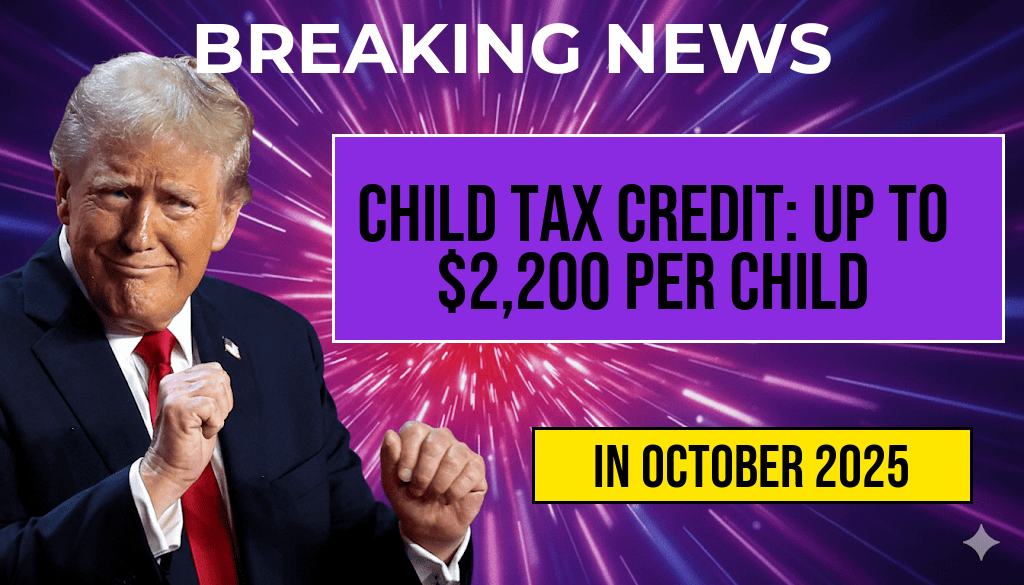The Child Tax Credit (CTC) is set to make a significant return in 2024, providing families in the United States with substantial financial relief. Under the new provisions, eligible families can expect to receive up to $2,200 for each qualifying child. This increase is part of ongoing efforts to support households struggling with rising costs and inflation. The revised tax credit aims to alleviate some of the financial burdens many families face while reinforcing the government’s commitment to child welfare. With these changes, families with children will be able to benefit from enhanced financial support, encouraging economic stability and growth.
Details of the Child Tax Credit Changes
The upcoming iteration of the Child Tax Credit will include several key updates that families should be aware of as they prepare for tax season. The maximum amount per qualifying child has seen an increase, making it more beneficial for families with multiple dependents. Below are the primary features of the revised credit:
- Maximum Credit Amount: Families will receive up to $2,200 for each child under the age of 17.
- Income Thresholds: The credit begins to phase out for single filers with an adjusted gross income (AGI) above $200,000 and married couples filing jointly above $400,000.
- Refundable Credit: A portion of the credit will be refundable, allowing families to receive a refund even if they owe no taxes.
Eligibility Requirements
To qualify for the enhanced Child Tax Credit, families must meet certain criteria. Here are the essential eligibility requirements:
- Age of Children: The child must be under 17 years old at the end of the tax year.
- Relationship: The child must be the taxpayer’s dependent, which includes biological children, adopted children, and stepchildren.
- Residency: The child must have lived with the taxpayer for more than half of the year.
Impact on Families
The reinstatement of the Child Tax Credit is expected to have a profound impact on American families. According to recent studies, households that qualify for the CTC use these funds for essential expenses. The following areas are often highlighted as primary beneficiaries of the tax credit:
- Childcare Costs: Many families allocate the funds to cover daycare or after-school programs.
- Educational Expenses: Parents frequently use the credit for school supplies, tuition, and other educational materials.
- Healthcare: Families may also apply the funds towards medical expenses or health insurance premiums.
How to Claim the Child Tax Credit
Families interested in claiming the Child Tax Credit will need to file their federal tax returns. Here are some steps to ensure a smooth process:
- Gather Necessary Documents: Collect Social Security numbers for all qualifying children, along with income documentation.
- Complete the Tax Return: Use IRS Form 1040 or 1040-SR, ensuring to include the Child Tax Credit information.
- File Electronically: Consider e-filing for a faster processing time and quicker refund.
Conclusion
The return of the Child Tax Credit in 2024 signals a renewed effort by the government to support families facing economic challenges. By providing up to $2,200 for each qualifying child, the program aims to ease financial burdens and promote child well-being in the United States. Families are encouraged to familiarize themselves with the eligibility criteria and prepare necessary documentation for a successful tax filing. For more information, you can visit the IRS Child Tax Credit page or learn more about the CTC on Forbes.
Frequently Asked Questions
What is the Child Tax Credit and how much can families receive?
The Child Tax Credit is a tax benefit offered to families with qualifying children. Next year, families can receive up to $2,200 for each qualifying child, which can significantly reduce their overall tax liability.
Who qualifies for the Child Tax Credit?
To qualify for the Child Tax Credit, families must have dependent children under the age of 17. Additionally, income limits may apply, so it’s important to check the specific eligibility criteria set by the IRS.
When will families receive the Child Tax Credit refunds?
Families can expect to receive their Child Tax Credit refunds when they file their taxes for the upcoming year. The exact timing will depend on when the tax returns are processed by the IRS.
Is the Child Tax Credit refundable?
Yes, the Child Tax Credit is partially refundable. This means that if the credit amount exceeds the taxes owed, families may receive the difference as a refund, potentially increasing their overall financial support.
How can families claim the Child Tax Credit?
Families can claim the Child Tax Credit by filing their tax returns and completing the appropriate forms. It is recommended to consult with a tax professional or use reliable tax software to ensure all requirements are met.











